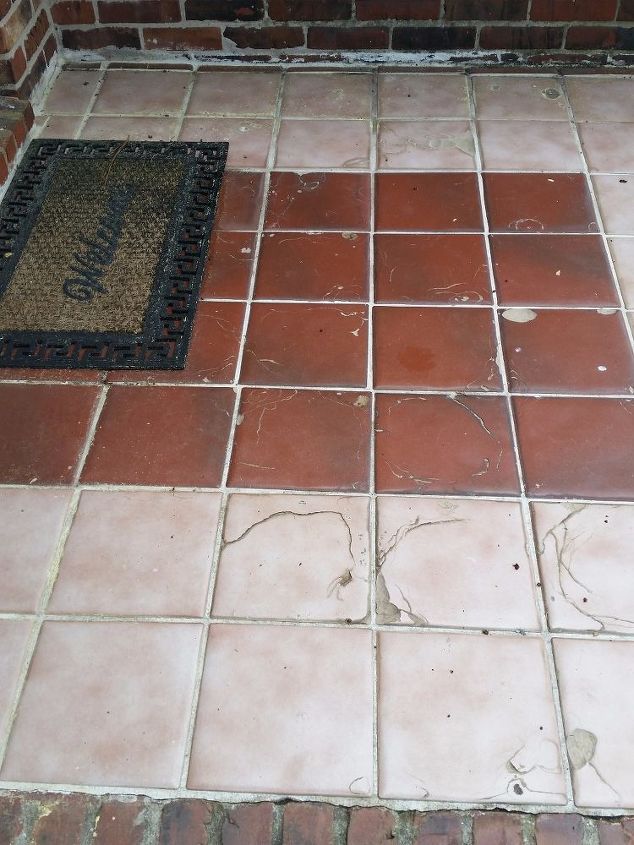How to fix a brick patio?

The brick patio is built on slab and the ground has shifted causing the brick and slab to crack severely leaving a one inch to brick width size crack. Is there a material I can fill in the crack to level out the patio? I am sure I would need a foundation company to dig underneath and lift the patio with piers. They built our house with a utility easement including a gigantic sewer pipe we recently discovered and the ground continues to shift. At this time I was hoping for a summer solution so we could use the patio again. any suggestions?
Related Discussions
How to get rid of mice?
We seem to have some unwelcome Mickeys and Minnies in our house. What is the best way to get rid of them?
How to remove popcorn ceiling with asbestos?
I want to remove my popcorn ceiling, but it has asbestos in it. How do I go about this safely?
How to caulk baseboard gaps?
How do I fill gaps at baseboard, should I caulk? If so, does anyone know how to caulk baseboards?
How to fix squeaky hardwood floors?
How do I fix squeaky hardwood floors?
How to fix Ugly and Cracked front porch tiles in the middle of bricks?
Can I use drywall puddy to fill cracks, sand and then use floor tile paint to upcycle this area? Anyone have more ideas. Please and thanks.Never resolved, summer appr... See more
How can I fix uneven bricks in a brick patio?
How can I fix my brick patio in backyard. Bricks uneven and I am 73 so I don't want to fall.





If the ground is still shifting anything you do won't last and fail. Possibly the sewer pipe is cracked and seepage is causing the shifting. You can fill the crack with concrete for a temporary fix. Dampen the old concrete and use a bonding primer for the new concrete to take hold. You do need to find out why the ground is shifting. May want to get in touch with whoever owns the easement and sewer pipe to see if that is the problem. You may get a new patio.
You don't say where you are but this year so many places had much more than usual amounts of rain/snow and then freezing which caused many shifts in ground and concrete problems it will continue as ground dries out & temps continue to rise. Contact who ever owns easement/utility access(city,county, utility company) to have them inspect to make sure sewage is not leaking under ground if ground shifting is at your house probably elsewhere too. you need to contact foundation professional to access damages on your property they'll let you know if it's even remotely connected. There are other ways to lift concrete with out digging it up and pouring/adding piers. no sense fixing anything until you get it checked out. temp fix for safety----fix cracks around bricks with Permasand--sand goes in cracks then wet it it solidifies;cement with cement.
Without looking at it it’s hard to be sure whether you are saying there is a drop off in the whole thing, a drop off where one part of the step is lower than the rest, or if there is no drop off-simply a gap. I had some back steps that had sunk due to chipmunks burrowing. The entire (cement) slab of steps had sunk down unevenly making the first step a little lower but the last step awkward and hazardous especially in the winter when leaves or snow might hide the spot where your toe would catch on the adjoining deck. I bought a bag of quikrete patch I think it was. Thoroughly cleaned the entire step slab. Followed the directions for prep. Mixed up a batch of the stuff and troweled it on. You can use a form but I didn’t. I had the adjoining deck as a guide for a finish height but if you don’t have that you can put stakes in the ground, tie a string taut between them to indicate finish height using a level to ensure make it level, or use wood scrap set to the height you want. Since your steps are brick, you may want or need to resurface the tops of all the steps keeping in mind there is a reason for building codes that specify step heights. An odd depth step can cause tripping accidents. So if you are making a dramatic change in one step height just do the same to all of them. It’s not really that much more work and your steps will look alike and will be safer. Once your concrete has cured, you can use a product like rustoleum deck restore on the whole thing to make it all match up. When mine was done it really looked great. This project may seem intimidating but once you’ve done it you may start looking for other projects involving concrete because of how easy it is to use and how dramatic the change. Good luck!